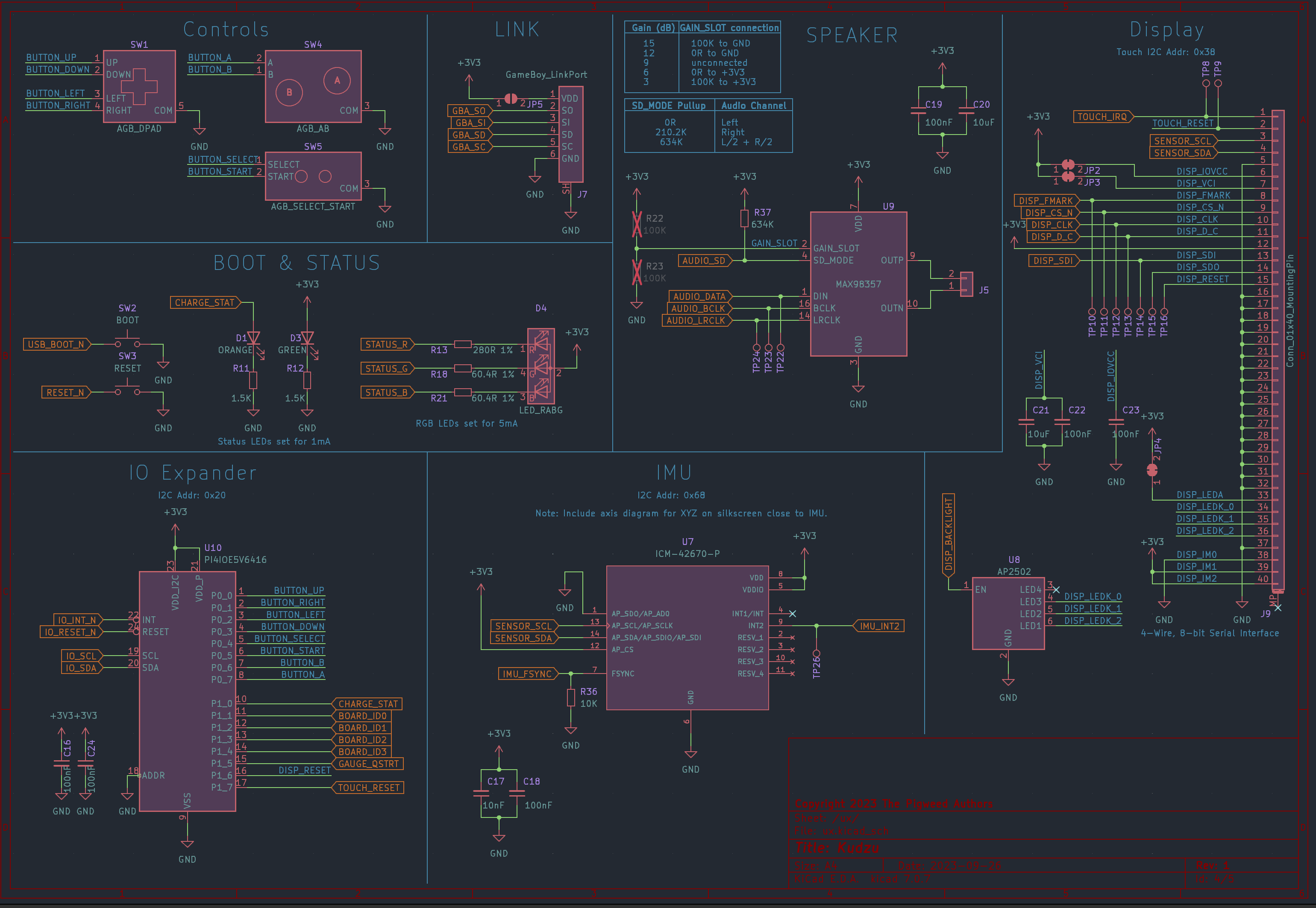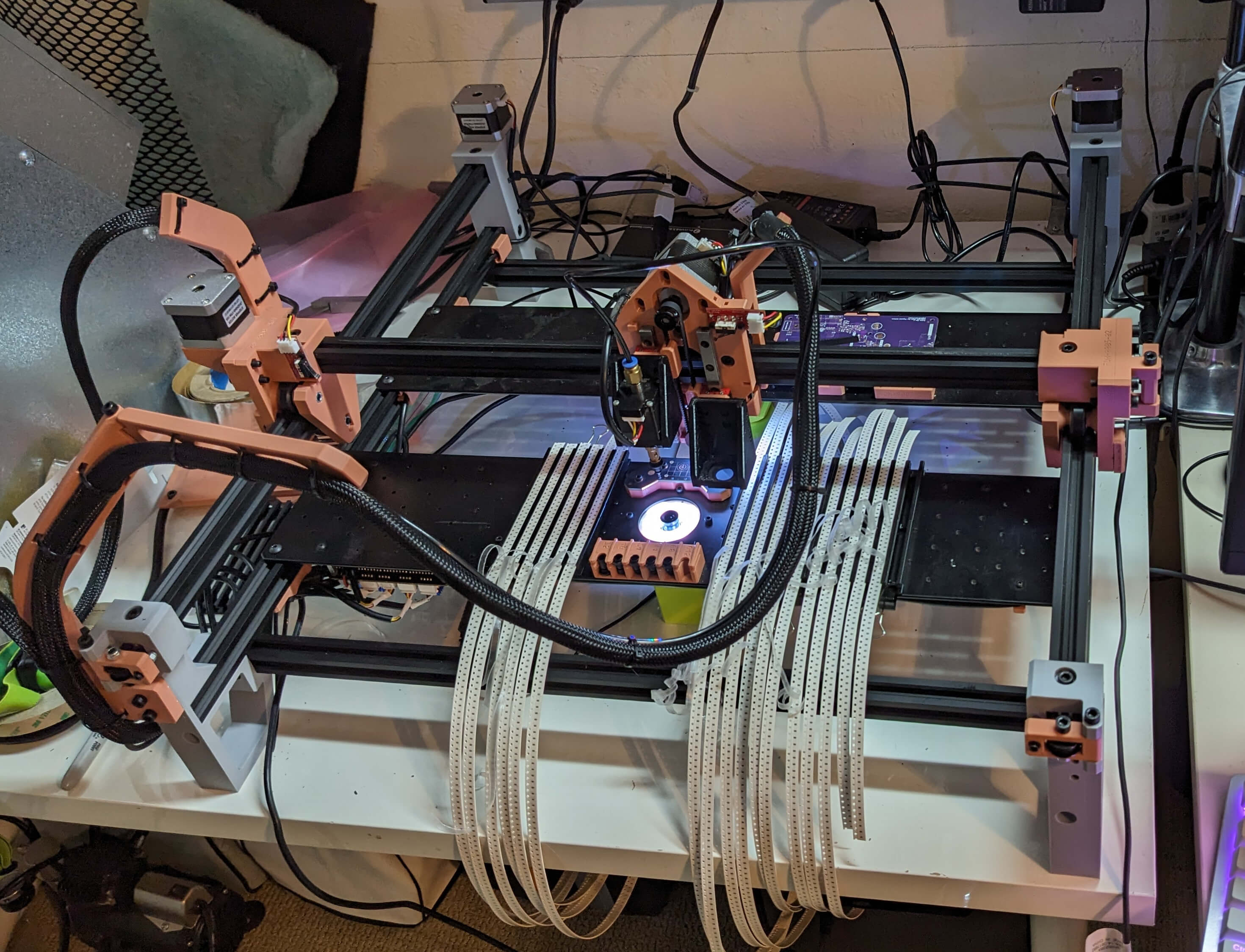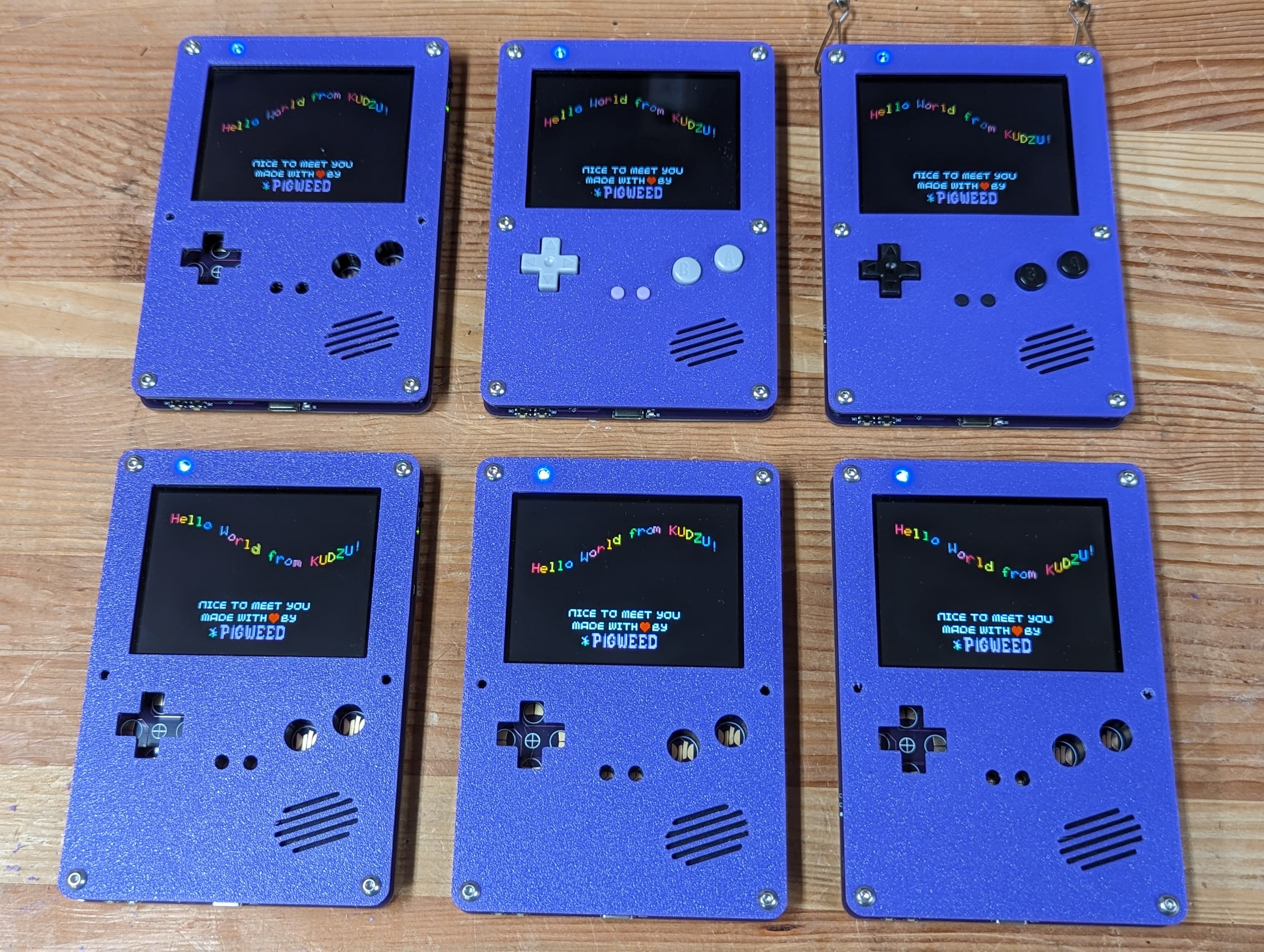Pigweed Eng Blog #1: Kudzu#
A note from the Pigweed Eng Blog editors
Welcome to the Pigweed Eng Blog! This is an informal blog where Pigweed teammates, contributors, and users can share ideas and projects related to Pigweed.
Our first post comes from Erik Gilling, a software engineer on the Pigweed team. Today, Erik is going to tell you about Kudzu, “Pigweed’s whimsical take on a development board”…
Please note that while Kudzu is open source, its hardware isn’t publicly available. Pigweed users may find the Kudzu source code to be a helpful example of a complex Pigweed integration.
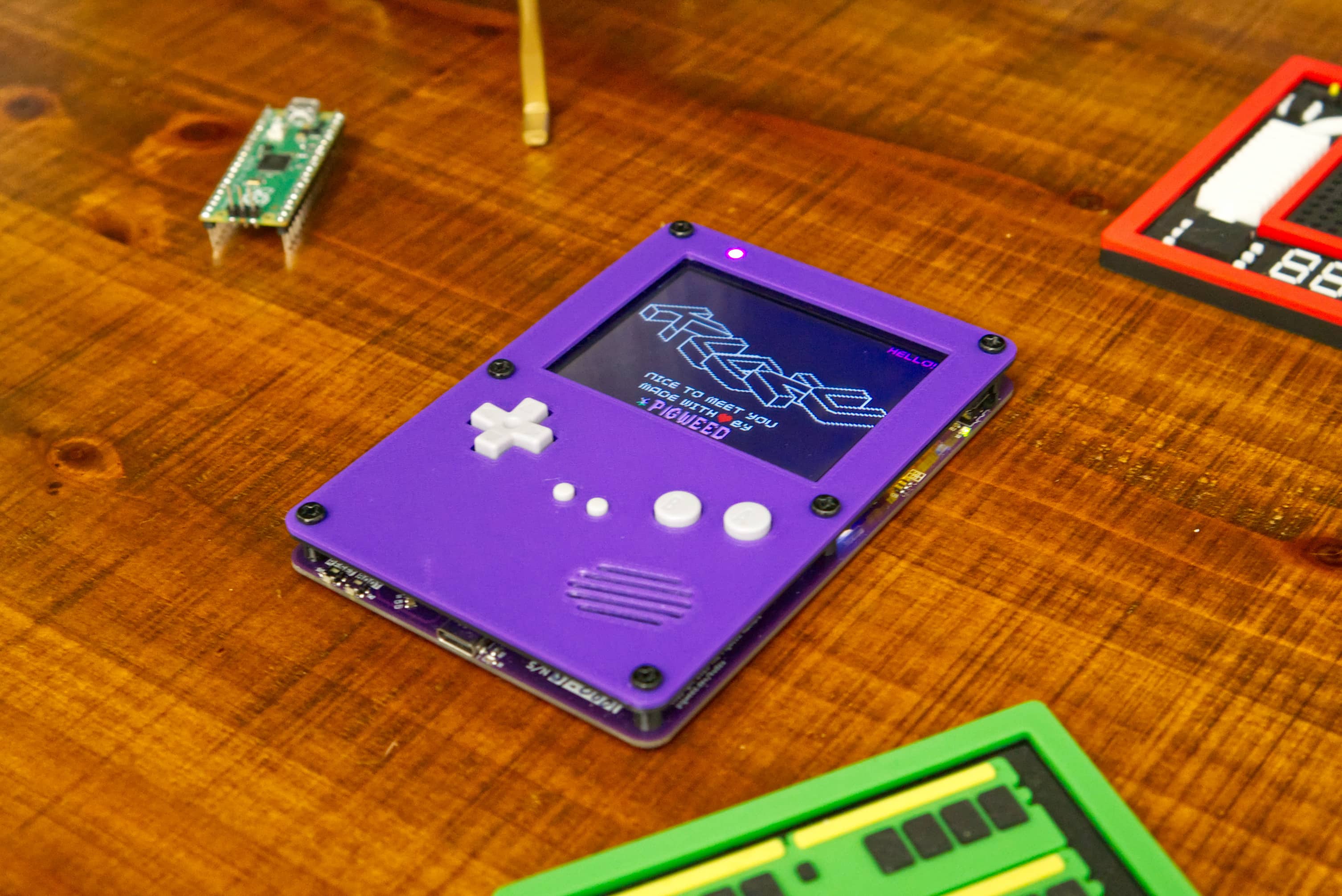
It all started so innocently#
The Pigweed team is taking a field trip to the Bay Area Maker Faire because unsurprisingly, that’s the kind of good time we’re up for! While discussing the plans at a team meeting I suggested: “We should make PCB badges that run Pigweed and wear that to the Faire!” I’ve always wanted to make a PCB badge and this seemed like the perfect opportunity to make a simple PCB that we could do a little bit of hacking on.
“Simple”#
The idea resonated with the team… perhaps too well. What started as something simple in my head quickly started creeping features. Hence the name Kudzu: a vine considered invasive in many parts of the world. Pigweed’s a weed. Our RFCs are called “seeds”. We’re all about the plant puns…
Anyways, the conversation went something like this:
“We should have some sort of sensor so it does something…”
“How should we power it? Let’s do LiPo charging…”
“Let’s add a display to highlight our recent Display Support SEED!”
“Touch screen?”
“D-Pad and buttons?”
“Speaker?”
“Wireless?”
“No!… but also yes…”
We quickly realized that what we wanted was more than a badge. We wanted a showcase for Pigweed. We wanted a project we can point people at to show them Pigweed running at it’s best. And thus Kudzu was born. Part badge, part development board, part handheld gaming system, and all Pigweed.
The laundry list#
We settled on the following laundry list of features and components:
- RP2040 Microcontroller
There’s a lot to love about the RP2040: a reasonable amount of SRAM, support for large/cheap/execute-in-place external flash, a wicked cool programmable I/O block, and most importantly: easy and cheap to source!
- 16 MB of Flash
We’re adding the maximum amount of flash that the RP2040 can support. This way we can pack as much awesome into the firmware as possible. Realistically 16 MB is an embarrassingly large amount of space for an embedded project and I can’t wait to see what cool stuff we fill it with!
- USB-C Connector
While we’re not adding USB Power Delivery to the board, the USB C connector is robust and common. Many of us on the team are tired of digging micro (or even mini) USB cables out of our desk drawers to hook up brand new dev boards or JTAG programmers!
- LiPo Battery with charger and fuel gauge
Once we decided on a portable gaming form factor, we wanted to have a built-in, rechargeable battery. The battery is 900mA and is set to charge at 500mA from USB when the system is off and 250mA when the system is running. As an added bonus we threw in a fuel gauge chip. Partly because it’s really nice to have an accurate view of the battery charge state and partly because it’s a neat chip to write software for.
- 3.2” IPS display with capacitive touch
This display is 240x320 which presents two challenges. First, it’s naturally portrait instead of landscape. We solve this by rotating the buffers once they’re rendered. The second is that a single 16-bit x 320 x 240 frame buffer is ~150K which is over half of the 264K of SRAM in the RP2040. Instead, we’re rendering at 160x120 and using the PIO module to pixel double the buffer as we’re sending it to the display. As an added bonus, the chunkier pixels gives Kudzu a nice retro feel.
- Directional Pad and Buttons
Here we’re leaning on off-the-shelf buttons and silicone pads. Game controller design is a whole rabbit hole and we’re going to rely on the collective wisdom of the retro modding community to give us nice-feeling controls.
- Six Axis IMU
An IMU is a great general purpose peripheral to demonstrate Pigweed’s HAL layer. Plus, there’s all sorts of cool demos you can write with an IMU and a display.
- I2S Audio DAC/Amplifier and Speaker
Chip tunes are best tunes. A couple of us on the team would love to port/write a tracker or FM synthesis engine.
- Gameboy Advance Link Port
As a simple way of hooking two devices together, we added link port. Again we’re using an existing link port and cable to avoid reinventing to wheel. Plus, there’s something awful nostalgic about that port!
- … and One More Thing
I kinda snuck an ESP32-C3 module onto the board at the last minute. Having wireless is something we wanted but didn’t want to burden the initial design and bring up with it. My thinking is that we’ll leave the module un-populated for now. My hope is that adding it to the board now may keep these boards from becoming landfill when we decide to tackle wireless.
Design, build, and rollout#
I used KiCad to design the board. It’s an open source PCB design package that has been making incredible strides in functionality and usability in the past few years. It comes with a high-quality library of symbols and footprint which is supplemented by community-maintained open source libraries.
After some careful design review from the team and a few friends of Pigweed we sent off the board to get fabbed and “patiently” waited for it to be delivered.
An EE at a previous company I worked at had a saying: “If you haven’t found three problems with your board, you’re not done looking”. The three problems we found in order from least to most crushing are:
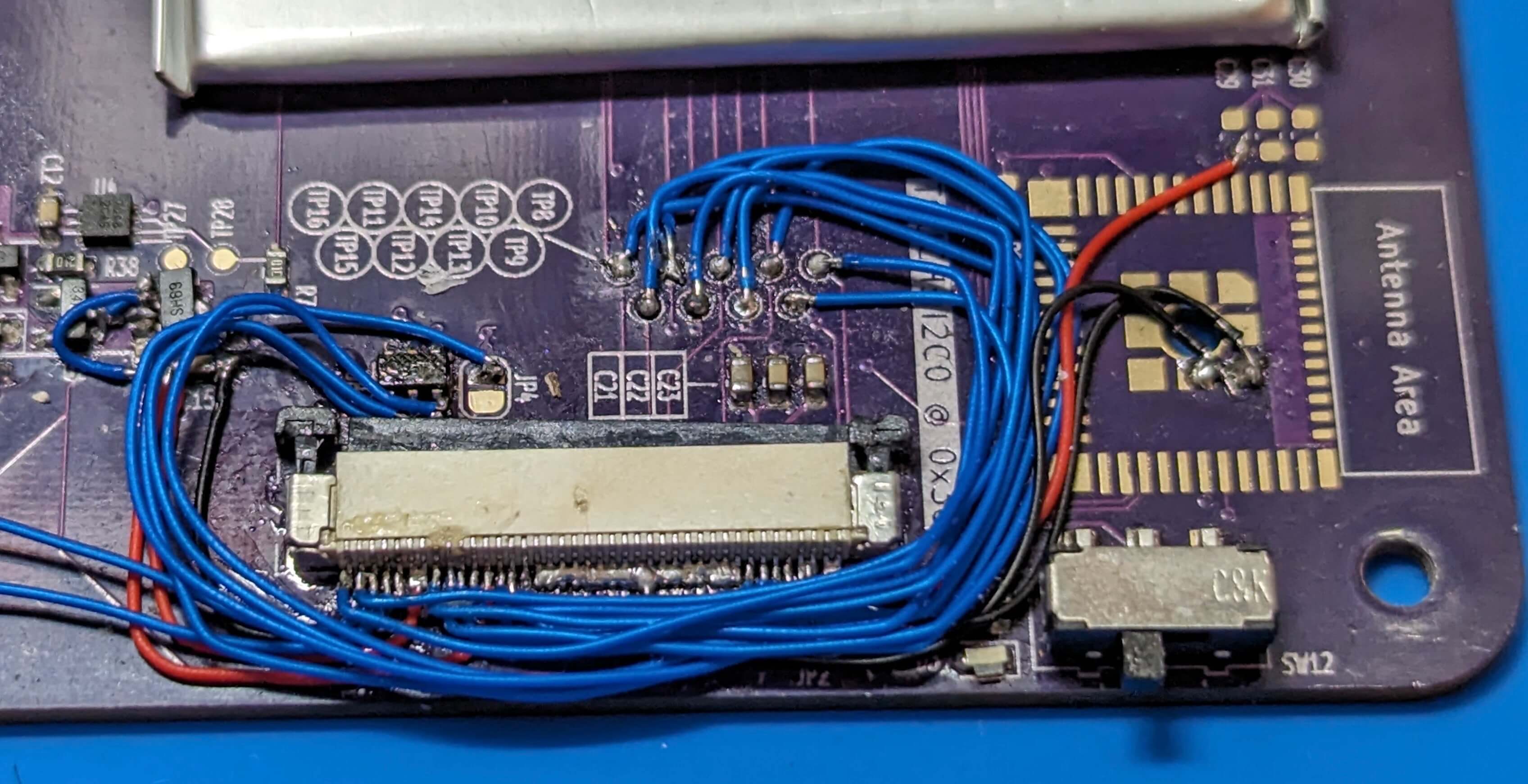
The reworked display connector and the unpopulated footprint for the “one more thing” that “we’ll get to eventually”
The BOOT and RESET labels were reversed. This led to some initial confusion on why the boards would not come up in bootloader mode.
One of the FETs (Q3) had the wrong pinout. This caused the power switch to be stuck on and the charge rate switching to not work.
The pins on the display FPC connector were swapped. This one was really crushing. The connector was fairly fine-pitched and 40 pins!
We were able to bring up the whole board including the display by rotating the connector. Sadly the display would not fit in the 3D printed parts we’d designed when plugged into the rotated connection. To validate our 3D printed parts, I painstakingly reworked on-board to get the connector oriented correctly. However, that was too much work and too fragile for all the boards. We had to do a re-spin and Maker Faire was approaching quickly! Time to lather, rinse, and repeat.
Fast forward to Monday night before Maker Faire. The boards come in and I spent the evening preparing for a build party. On Tuesday, with some robotic help, we managed to build and test 8 boards and get them in team members’ hands on Wednesday.
Thankfully, because Pigweed is modular and portable, we were able to get our software working on it quickly, freeing us to spend the next couple days hacking together some simple fun demos for Maker Faire!
Photos#

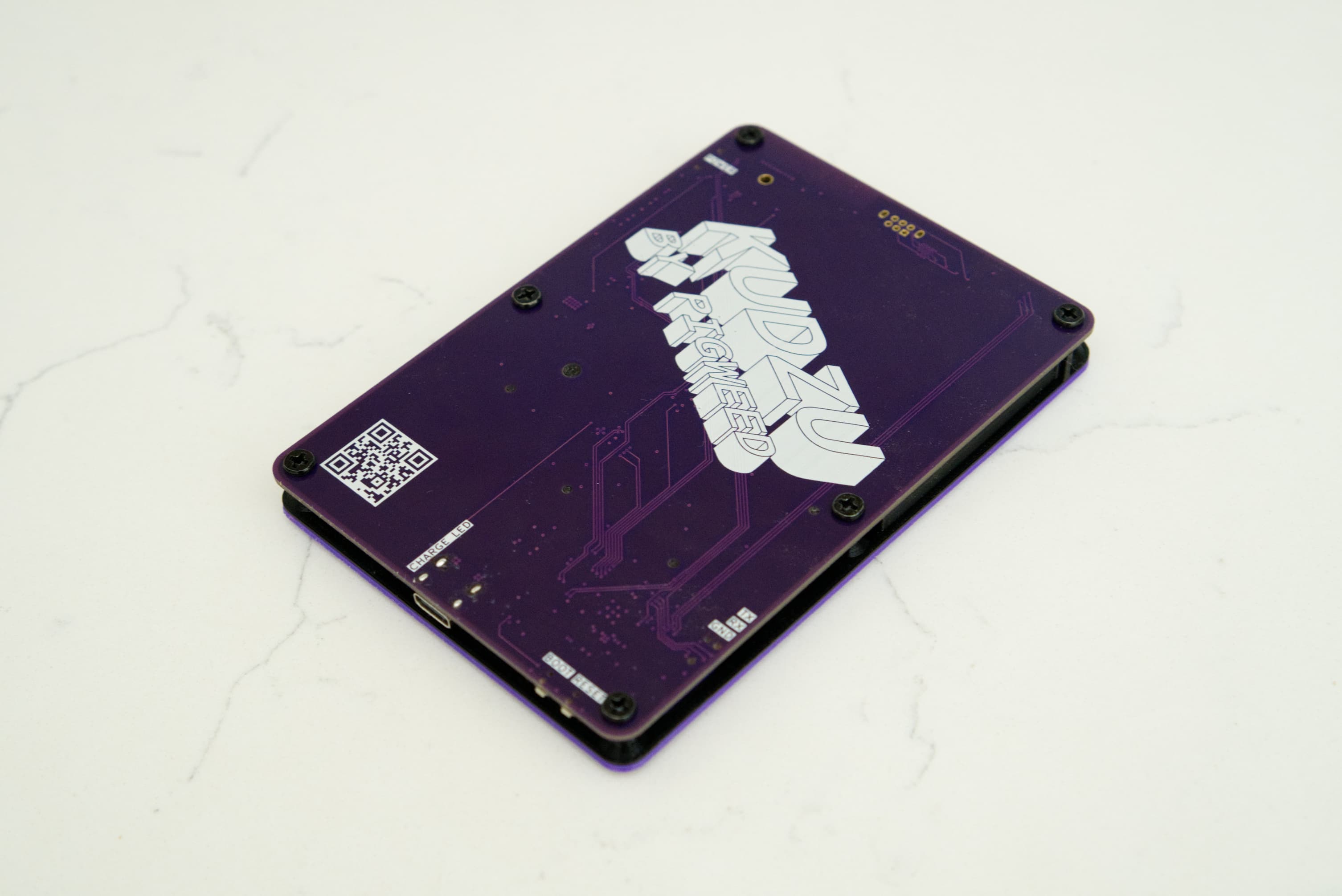
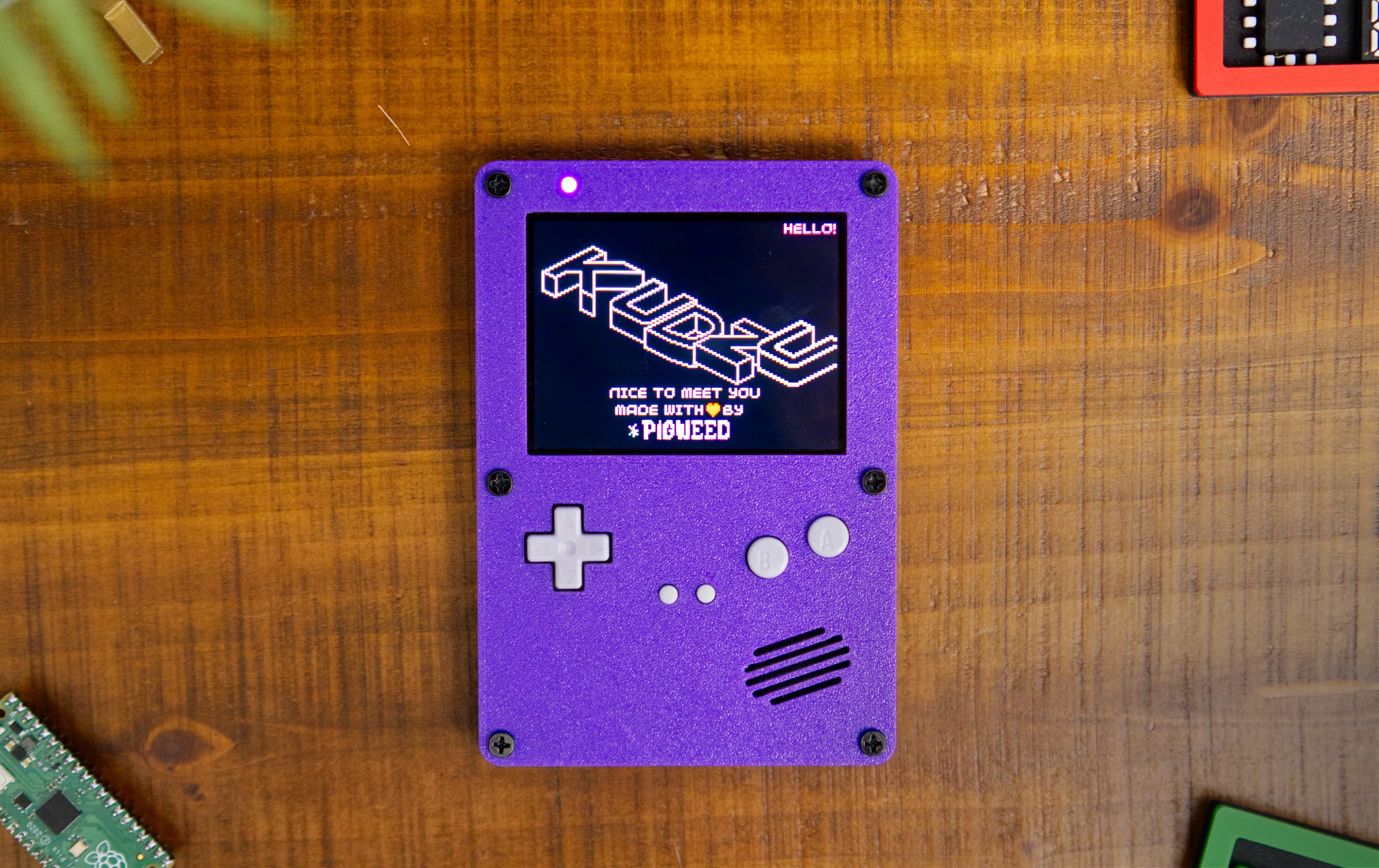
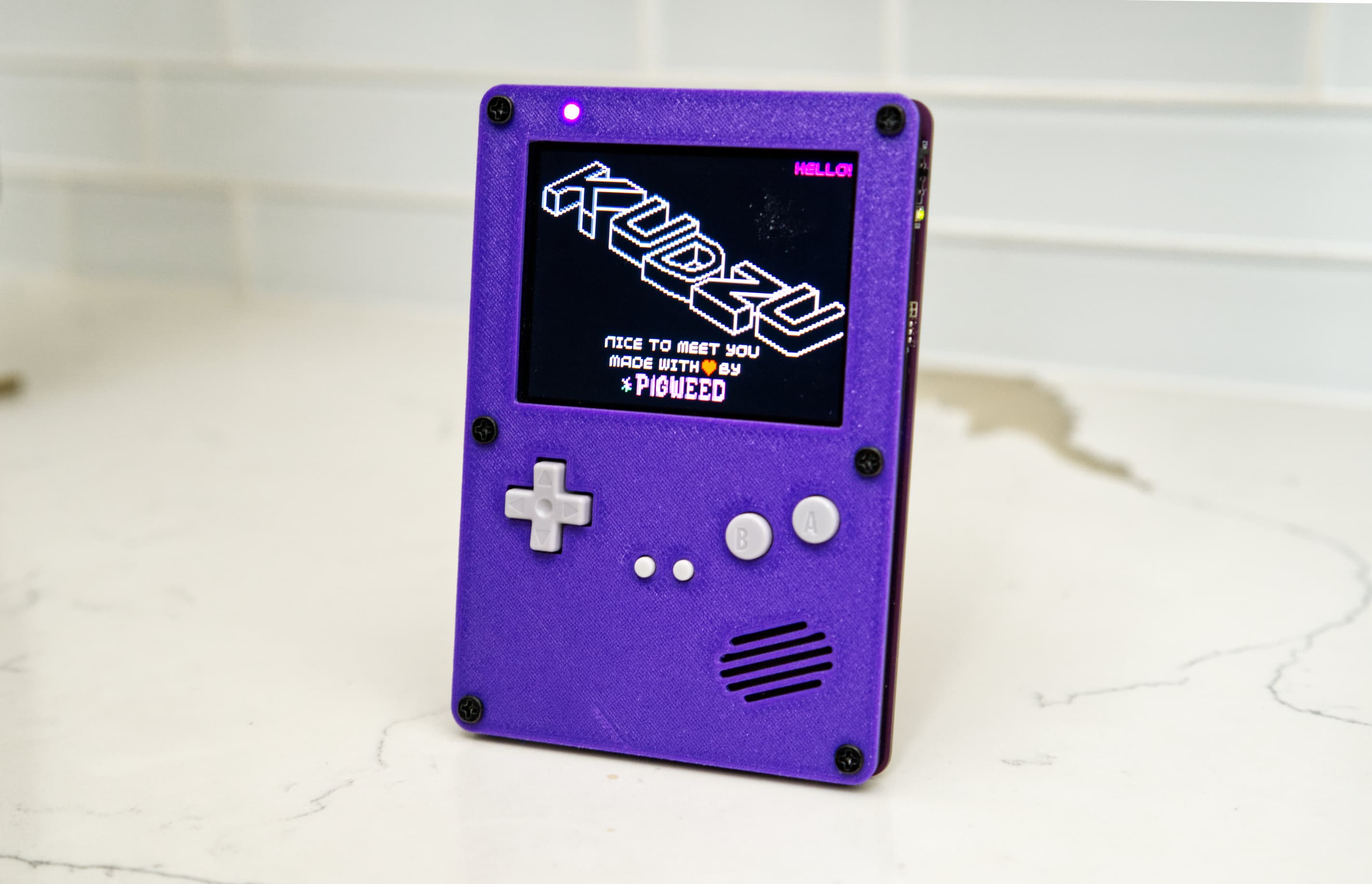
Learn more#
We don’t have any plans to distribute hardware outside of our team but are excited to publish the living project to serve as an example of how to build firmware integrated with Pigweed. Over the coming months we’ll be publishing more functionality to the repository.
Head over to the Kudzu repo where you’ll find:
KiCad PCB Design
Our next Pigweed Live is Mon May 06, 2024 1PM (PDT). Please join us to discuss what’s new in Pigweed and anything else Pigweed-related.
